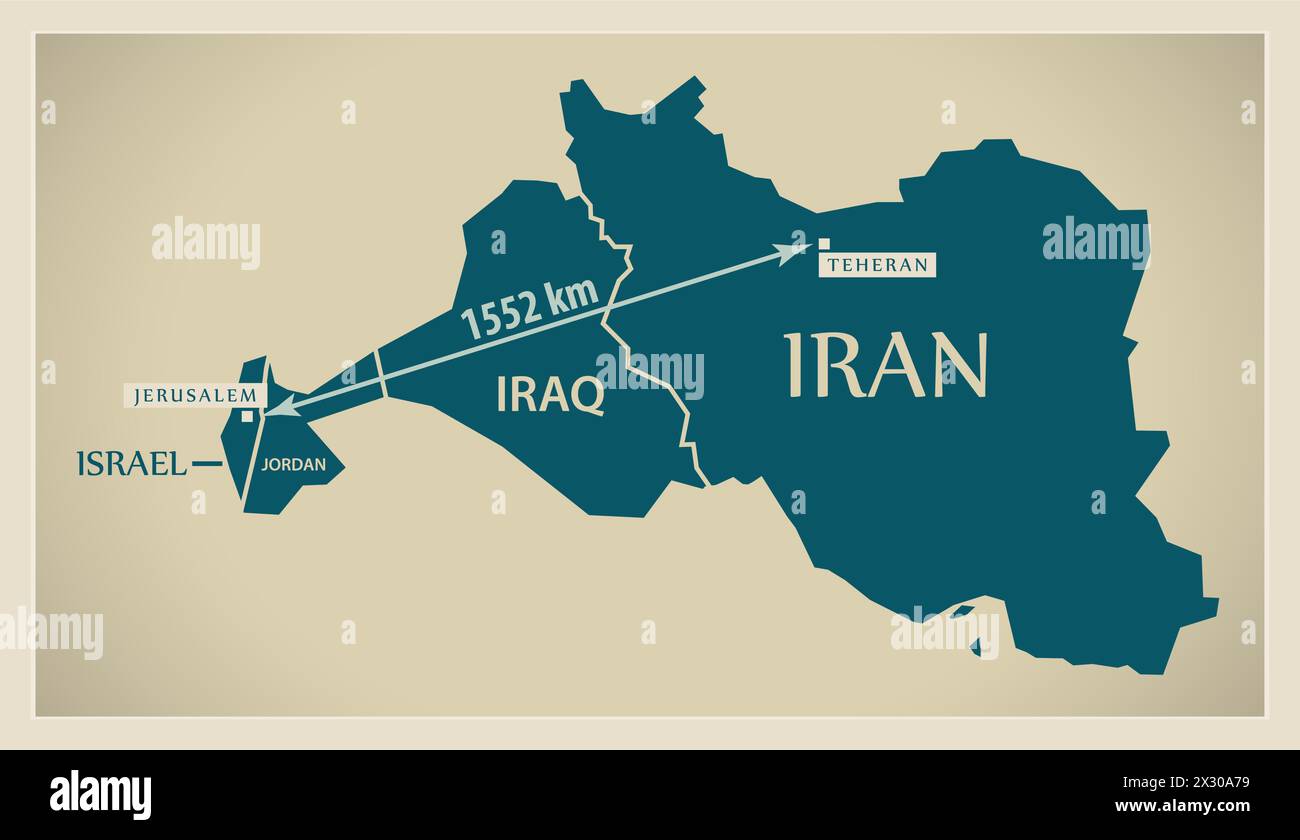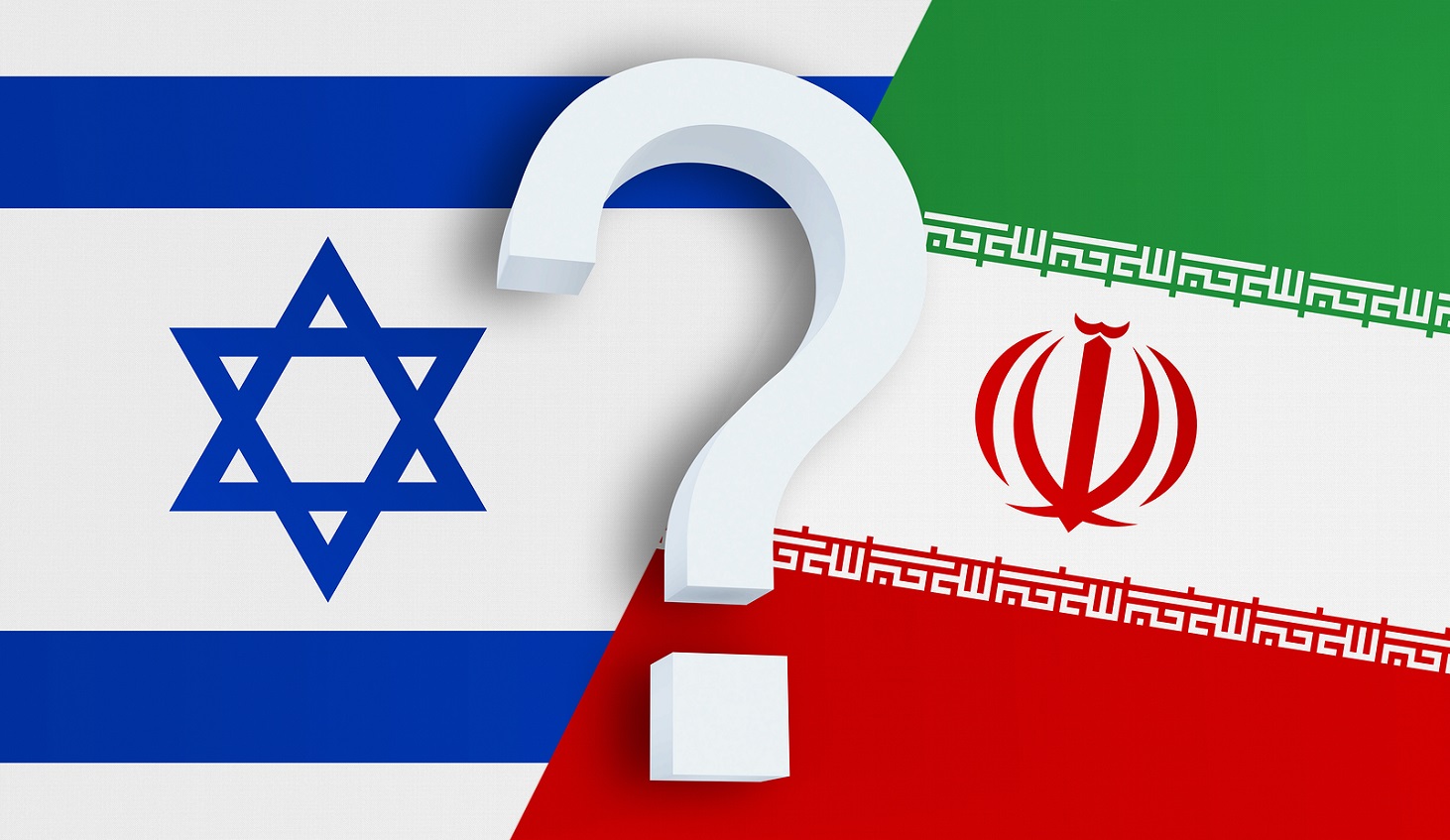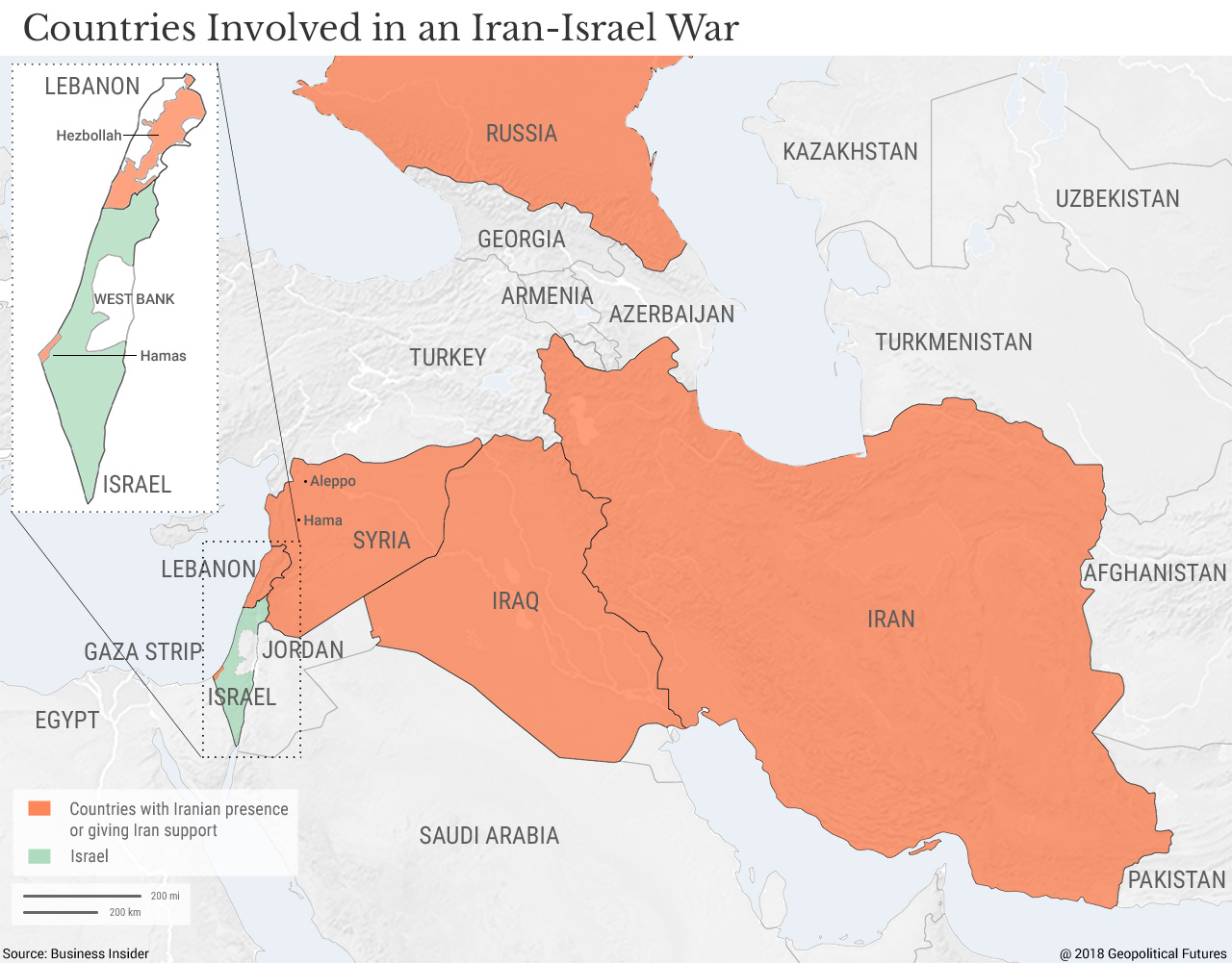Unraveling The Kilometers: The True Distance Between Iran And Israel
In a world increasingly interconnected yet often defined by geopolitical tensions, understanding fundamental geographical facts becomes paramount. One such fact, frequently discussed and often misconstrued, is the physical distance between Iran and Israel in kilometers. Far from being a mere number on a map, this measurement carries significant implications for regional dynamics, strategic planning, and even public perception. Accurately determining this geographical separation requires reliable tools and a clear understanding of what "distance" truly entails in a complex geopolitical landscape.
This article aims to demystify the exact kilometric gap separating these two nations, exploring the methodologies used to calculate it, the factors that influence perceived proximity, and why this seemingly simple metric holds such profound importance. We will delve into how modern tools provide precise measurements, offering clarity on a topic often shrouded in speculation, ensuring that readers gain an expert, authoritative, and trustworthy understanding of this crucial geographical reality.
Table of Contents
- Understanding Geographic Distance: More Than Just a Number
- How is the Distance Between Iran and Israel in Kilometers Calculated?
- Key Geographic Points: Tehran and Jerusalem as Reference Points
- Factors Influencing Perceived Distance and Travel Time
- Historical Context and Geopolitical Implications of Proximity
- The Role of Digital Tools in Measuring Global Distances
- Why Accurate Distance Matters: From Logistics to Geopolitics
- Dispelling Misconceptions About the Iran-Israel Distance
Understanding Geographic Distance: More Than Just a Number
When we talk about the distance between Iran and Israel in kilometers, it's essential to define what kind of distance we are referring to. Is it the shortest possible straight line through the air, often called the "as the crow flies" distance? Or are we considering the actual ground travel routes, which would involve navigating through various countries, terrains, and potentially political borders? The answer to this question profoundly impacts the numerical value we arrive at and, more importantly, its practical implications. Geographical distance is not just a static number; it's a dynamic concept influenced by the Earth's curvature, the specific points chosen for measurement, and the available pathways. Understanding these nuances is crucial for anyone seeking an accurate and comprehensive grasp of the subject.
For instance, a straight-line measurement provides the absolute minimum separation, a theoretical benchmark. However, real-world travel, whether by land, air, or sea, always involves detours, airspace restrictions, and logistical considerations that significantly extend the effective travel distance and time. This distinction is particularly vital in regions with complex geopolitical landscapes, where direct routes might be politically or physically impassable. Therefore, when discussing the distance between Iran and Israel in kilometers, we must consider both the theoretical minimum and the practical realities.
How is the Distance Between Iran and Israel in Kilometers Calculated?
Calculating the distance between Iran and Israel in kilometers precisely relies on sophisticated geographical tools and algorithms. Modern online distance calculators, such as the one described in the "Data Kalimat" provided (e.g., `distance.to`), are designed to provide accurate measurements between virtually any two points on Earth. These tools leverage advanced mapping technologies and geodesic calculations to determine the shortest path, whether it's an "air line" or a navigable route.
The famous distance calculator allows you to determine the distance in kilometers that separates two places and coordinates. It also provides a route planner, interactive maps, and more. With the distance calculator `distance.to`, you can easily determine the distance between worldwide locations. You just need to enter any desired location into the search function, and you will get the shortest distance. This functionality is key to understanding the various ways distance can be presented.
- Barron Trump Illness The Facts Speculations And Everything You Need To Know
- Billie Eilish
- Discovering The Legacy Of Desi Arnaz Jr
- Clint Eastwood On Trump 2024
- How Much Does Jimmy Kimmel Make
The "Air Line" or Straight-Line Distance
The "air line" distance, also known as the great-circle distance, represents the shortest path between two points on the surface of a sphere (or spheroid, which is a more accurate model for Earth). This is the most common and straightforward way to measure the distance between Iran and Israel in kilometers when considering aerial travel or theoretical proximity. For example, if you input "Tehran" (Iran's capital) and "Jerusalem" (Israel's capital) into a reliable distance calculator, it will quickly show you the distance in kilometers between Tehran and Israel and display the route on an interactive map. This calculation bypasses any landmasses or political borders, providing the absolute minimum separation.
For instance, using a worldwide distance calculator with air line functionality, the direct distance between Tehran, Iran, and Jerusalem, Israel, is approximately 1,600 to 1,800 kilometers (around 994 to 1,118 miles). This figure can vary slightly depending on the exact coordinates chosen for each city (e.g., city center, specific airport, etc.) but provides a consistent baseline for the "as the crow flies" measurement. This is the fundamental number often referenced in strategic discussions.
Practical Travel Routes and Their Complexities
While the "air line" distance offers a theoretical minimum, actual travel between Iran and Israel is significantly more complex due to geopolitical realities. There are no direct flights or land routes due to the absence of diplomatic relations and ongoing conflicts. Therefore, practical travel would involve circuitous routes through third countries, dramatically increasing the effective distance between Iran and Israel in kilometers and travel time.
A route planner provided by distance calculators can show potential (though not necessarily politically viable) ground or flight paths. For example, such a tool might show the distance in kilometers between London and Singapore, or Nigeria and Nairobi, and display the route on an interactive map, illustrating how complex real-world travel routes can be. These tools factor in roads, air corridors, and geographical obstacles, providing a more realistic, albeit often politically impossible, travel distance. The actual journey for individuals or goods would involve multiple stops and significantly longer distances, potentially doubling or tripling the direct air line measurement, depending on the mode of transport and the chosen intermediate destinations.
Key Geographic Points: Tehran and Jerusalem as Reference Points
To precisely calculate the distance between Iran and Israel in kilometers, it's crucial to select specific reference points within each country. The most commonly used points are the respective capital cities: Tehran for Iran and Jerusalem for Israel. These cities serve as symbolic and practical centers of their nations, making them ideal for representing the general separation.
Tehran, located in north-central Iran, is a sprawling metropolis and the political, economic, and cultural heart of the country. Jerusalem, a city of immense historical and religious significance, serves as Israel's capital and a major population center. Measuring the distance between these two prominent urban centers provides a widely accepted and understood figure for the overall geographical separation. While other cities like Tel Aviv (Israel's economic hub) or specific military installations could also be chosen, using the capitals offers a broad and representative understanding of the kilometric gap.
Factors Influencing Perceived Distance and Travel Time
Beyond the raw numerical distance between Iran and Israel in kilometers, several factors influence the perceived distance and actual travel time. Geopolitical tensions, border closures, and the absence of direct diplomatic ties mean that any journey between these two nations is not a simple point-to-point transit. Airspace restrictions, for instance, force aircraft to take circuitous routes, adding hundreds or even thousands of kilometers to what would otherwise be a direct flight path.
Furthermore, the nature of the intervening territories plays a significant role. Countries like Iraq, Syria, and Jordan lie between Iran and Israel. The political stability and accessibility of these intermediate nations directly impact any potential land-based travel. Even for air travel, the requirement for overflight permissions from multiple countries can add layers of complexity. These practical impediments make the effective "distance" far greater than the straight-line measurement, transforming a theoretical short hop into a lengthy and complicated journey, if at all possible. This disparity between theoretical and practical distance is a critical aspect of understanding the relationship between these two states.
Historical Context and Geopolitical Implications of Proximity
The distance between Iran and Israel in kilometers, while a geographical fact, is imbued with significant historical and geopolitical meaning. Historically, the region has been a crossroads of empires and civilizations, leading to complex interdependencies and rivalries. In the modern era, the physical proximity, despite the lack of direct borders, means that events in one nation can have ripple effects in the other, directly or indirectly.
The approximately 1,600-1,800 km separation is often framed in terms of strategic reach, particularly concerning military capabilities. This distance is within the range of various ballistic missiles and long-range aircraft, making the geographical separation a key consideration in strategic defense and offense planning for both nations. The perception of this distance, therefore, is not just about travel; it's about perceived threat levels and strategic depth. The relatively short air-line distance, when viewed through a military lens, suggests a degree of vulnerability or reach that is constantly assessed and debated in international security circles. Understanding this context is vital for grasping why the simple numerical distance holds such weight.
The Role of Digital Tools in Measuring Global Distances
In today's digital age, determining the distance between Iran and Israel in kilometers, or any two points globally, has become incredibly accessible thanks to advanced online tools. Websites like `distance.to` exemplify how technology has democratized geographical information, allowing anyone to easily ascertain distances, plan routes, and visualize global relationships. These platforms are far more than simple calculators; they are comprehensive geographical information systems at your fingertips.
With the distance calculator `distance.to`, you can easily calculate distances between places all over the world. Simply enter any desired location into the search function, and you will get the shortest distance. It provides a route planner, interactive maps, and travel duration estimates, making it an invaluable resource for various applications, from logistics to academic research. The ability to quickly and accurately retrieve such data underscores the expertise and authoritativeness these tools bring to geographical inquiries.
Interactive Maps and Route Planners
A key feature of modern distance calculators is their integration with interactive maps and sophisticated route planners. These tools don't just give you a number; they show the distance in kilometers between, for example, Tehran and Israel and display the route on an interactive map. This visual representation is incredibly powerful, allowing users to see the geographical context, identify intervening countries, and understand the curvature of the Earth's surface that affects air travel.
The route planner functionality, while perhaps not directly applicable for travel between Iran and Israel due to political barriers, is incredibly useful for other global journeys. It can show the shortest distance between London and Singapore, or Mecca and Medina, and display the route on an interactive map, including air line, route, and travel duration. This comprehensive approach provides a much richer understanding of geographical relationships than a simple numerical output.
Beyond Simple A-to-B: Midpoints and Other Features
Modern distance calculation tools go beyond just providing the shortest A-to-B distance. They offer a suite of features that enhance geographical understanding. For instance, some tools can help you find the midpoint between two cities or places, answering questions like "where is the center between two cities or places, or where can you meet in the middle?" This functionality, while not directly related to the distance between Iran and Israel in kilometers, highlights the sophistication of these platforms.
Furthermore, these calculators can show the distance from a specific city, like Tokyo, to global reference points such as the North Pole, Equator, South Pole, or any other place in the world. They include air line, route, center points, flight routes, and interactive maps. This broad utility underscores their trustworthiness and the depth of geographical data they process, making them indispensable for anyone needing precise spatial information.
Why Accurate Distance Matters: From Logistics to Geopolitics
The accuracy of the distance between Iran and Israel in kilometers holds significant weight across various domains, extending far beyond simple geographical curiosity. In the realm of logistics and trade, precise distance calculations are fundamental for planning shipping routes, estimating fuel consumption, and determining transit times, all of which impact economic viability. While direct trade between Iran and Israel is non-existent, the principle applies globally.
More critically, in geopolitics and defense, accurate distance measurements are paramount. They inform strategic assessments of military reach, missile ranges, and the logistical challenges of deploying forces. Understanding the exact kilometric gap helps military strategists and policymakers evaluate potential threats, plan defense mechanisms, and assess the feasibility of various operations. Miscalculations or reliance on imprecise data could lead to flawed strategic decisions with potentially severe consequences. Therefore, the expertise and authoritativeness of the data sources for such distances are not just academic but have real-world implications for national security and international relations.
Dispelling Misconceptions About the Iran-Israel Distance
Despite the availability of precise geographical data, misconceptions about the distance between Iran and Israel in kilometers persist. These often stem from a combination of geopolitical rhetoric, simplified media portrayals, and a general lack of understanding regarding geographical scale. Some narratives might inadvertently suggest a closer proximity than what the actual kilometers indicate, or conversely, an exaggerated separation.
It's crucial to rely on factual, data-driven sources rather than assumptions. The tools described, which provide worldwide distance calculations with air line, route planner, and travel duration, are designed to offer objective data. They illustrate, for example, the distance in kilometers between Dublin and Cork, or Mecca and Medina, with the same precision they apply to the Iran-Israel measurement, underscoring the universal applicability and reliability of their methods. By consulting such authoritative sources, we can ensure that our understanding is based on verifiable facts, not speculative narratives.
The Illusion of Closeness vs. Actual Kilometers
The intense political rhetoric and frequent media coverage of the Iran-Israel relationship can sometimes create an "illusion of closeness," making it seem as though these two nations are immediate neighbors on a map. However, the actual distance between Iran and Israel in kilometers—approximately 1,600 to 1,800 km by air—reveals a substantial geographical separation. To put this in perspective, this distance is roughly equivalent to traveling from London to Rome, or from New York City to Dallas.
While this distance is certainly within the range of modern military capabilities, it is by no means a direct border or an immediate adjacency. Recognizing this actual kilometric gap is vital for a balanced understanding of the strategic landscape. It helps to contextualize discussions about security, influence, and potential conflicts, moving beyond abstract notions of "proximity" to concrete, measurable facts. This factual grounding is essential for expert analysis and trustworthy reporting on regional dynamics.
Conclusion
Understanding the precise distance between Iran and Israel in kilometers is far more than a geographical exercise; it's a critical component in comprehending the complex geopolitical dynamics of the Middle East. We've explored how modern, authoritative tools provide accurate "air line" measurements, typically ranging from 1,600 to 1,800 kilometers between their respective capitals, Tehran and Jerusalem. We've also highlighted how practical travel routes are significantly longer due to political barriers and the lack of direct connectivity.
This kilometric separation, while substantial, remains within the strategic reach of various military assets, underscoring its importance in defense planning and regional stability assessments. By relying on trustworthy data and dispelling common misconceptions, we can foster a more informed and nuanced understanding of this crucial geographical fact. We encourage you to utilize reliable distance calculators to explore these measurements for yourself and gain a deeper appreciation for the intricate geography that shapes our world. Share your thoughts in the comments below, or explore our other articles for more insights into global geographical and geopolitical topics.
- Daisys Destruction An Indepth Look At The Controversial Case
- Lee Jong Suk And Iu Are Confirmed Married
- Melanie Zanona
- Emily Carriveau Divorce Filing
- Caitlin Clark Shower

Modern Map - Distance between Jerusalem ISRAEL and Teheran IRAN Stock

Increasing threats of a regional conflict between Iran and Israel

Israel and Iran Prepare for Conflict - Geopolitical Futures